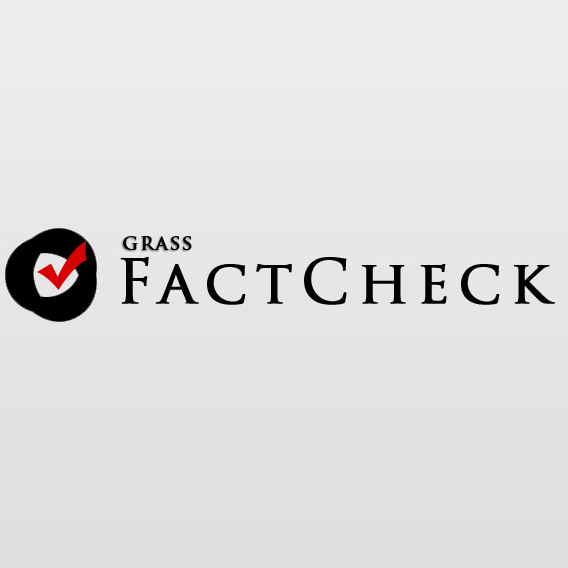Tamar Chergoleishvili: “[Paedophilia] This is alarming data, considering that the figures seem to have been deliberately lowered.”
Verdict: FactCheck concludes that Tamar Chergoleishvili’s statement is TRUE.
Analysis
Tamar Chergoleishvili, one of the leaders of the Federalists political party, published a statement on Facebook on 21 May, noting: “Forget the purity of the family – 51 cases of paedophilia were recorded in the first quarter of 2025. This is alarming data, considering that the figures seem to have been deliberately and sharply lowered – this crime is very often concealed by the victim.”
FactCheck verified Tamar Chergoleishvili’s statement.
The Ministry of Internal Affairs publishes monthly and yearly crime statistics across Georgia.
The Criminal Code of Georgia does not define paedophilia as a separate offence. Instead, sexual crimes against minors – specifically individuals under the age of 14 – are considered aggravating circumstances for sexual offences. These include Article 137 – Rape, Article 138 – Forced sexual intercourse and Article 139 – Coercion to engage in sexual intercourse or other acts of a sexual nature.
In addition, the Code includes two provisions that directly address acts committed against individuals under the age of 16: Article 140 – Sexual intercourse or other acts of sexual nature with a person under the age of 16 and Article 141 – A lewd act of an adult committed knowingly by an offender without violence against a person that has not reached 16 years of age.
The Ministry of Internal Affairs includes only Articles 140 and 141 amongst offences against minors in its section on registered crime statistics. Hence, the author of the statement based her assessment of paedophilia on the combined figures from these two provisions.
Notably, 22 cases were registered under Article 140 and 29 under Article 141 – amounting to a total of 51 recorded offences according to crime statistics from 1 January to 31 March.
Table 1: Crime Statistics of the First Quarter of 2025
Violent offences against minors – such as rape (Article 137), sexual assault (Article 138) and forced sexual act (Article 139) – are not separately categorised by aggravating circumstances in the registered crime statistics. Instead, these cases are aggregated into a common statistical unit without differentiation. This approach represents a clear methodological flaw, significantly limiting the ability to accurately assess the scale of the problem and realistically assess the threats to child protection.
Victim statistics for crimes committed against minors, including violent offences, offer some insight (albeit limited) [1] when examined by specific articles.
The table below presents data from January to March 2025 on registered cases of crimes against sexual freedom and inviolability involving minors as victims, alongside the rate of prosecution initiation:
Table 2: January-March 2025
Thus, the figure cited by Tamar Chergoleishvili – which is a sharply reduced number, as she herself notes – omits at least four minors who were victims of rape, four who suffered sexual violence and one who experienced other forms of coercion in the January-March period.
It is also concerning that the number of identified victims is significantly lower than the number of registered cases. For instance, only 27 victims were identified out of 51 registered cases, focusing on Articles 140 and 141 alone. [2] Moreover, criminal prosecution was initiated against just 23 individuals.
One in five children in Europe is a victim of some form of sexual violence according to the Council of Europe – “This includes sexual touching, rape, sexual harassment, grooming, exhibitionism, exploitation in prostitution and pornography, online sexual extortion and coercion.” A significant proportion – one in three victims – do not disclose the violence they have experienced. The main reasons for silence include feelings of shame and guilt, fear of disbelief and concerns about potential consequences such as retaliation or damage to family, reputation or career. Another factor is that many children do not know whom to turn to for help.
Such a high rate of underreporting represents a significant gap in crime statistics across Europe. Different countries and international organisations address the issue through various public campaigns and institutional reforms. Furthermore, criminal code provisions related to paedophilia vary in definitions, age groups and approaches to online versus offline offences. Cultural and social factors also play a role – affecting how easily victims feel they can report crimes to the police in different societies. As a result, comparing these statistics across countries in a valid method becomes impossible.
Considering the above, FactCheck is unable to evaluate the characterisation of the cited data as alarming through comparison with statistics from other, more developed countries.
Accordingly, Tamar Chergoleishvili is correct in stating that “this is alarming data, considering that the figures seem to have been deliberately lowered.” However, the statistical data presented in the statement is not entirely accurate and is insufficient to fully assess the scope of paedophilia – an issue the author herself acknowledges. Thus, FactCheck concludes that Tamar Chergoleishvili’s statement is TRUE.
[1] Statistics of those affected by a crime may not fully reflect the actual number of victims which are more accurately represented by crime registration data.
[2] It is important to note that registering a crime does not necessarily imply the victim has been identified; this may reflect either a lack of evidence or the victim’s refusal to cooperate with the investigation.

![“[Paedophilia] This is alarming data, considering that the figures seem to have been deliberately lowered.”](https://www.factcheck.ge/storage/files/320x180/d5f6c65c-dfa9-43d5-9865-7ec842bd5c49.webp)





